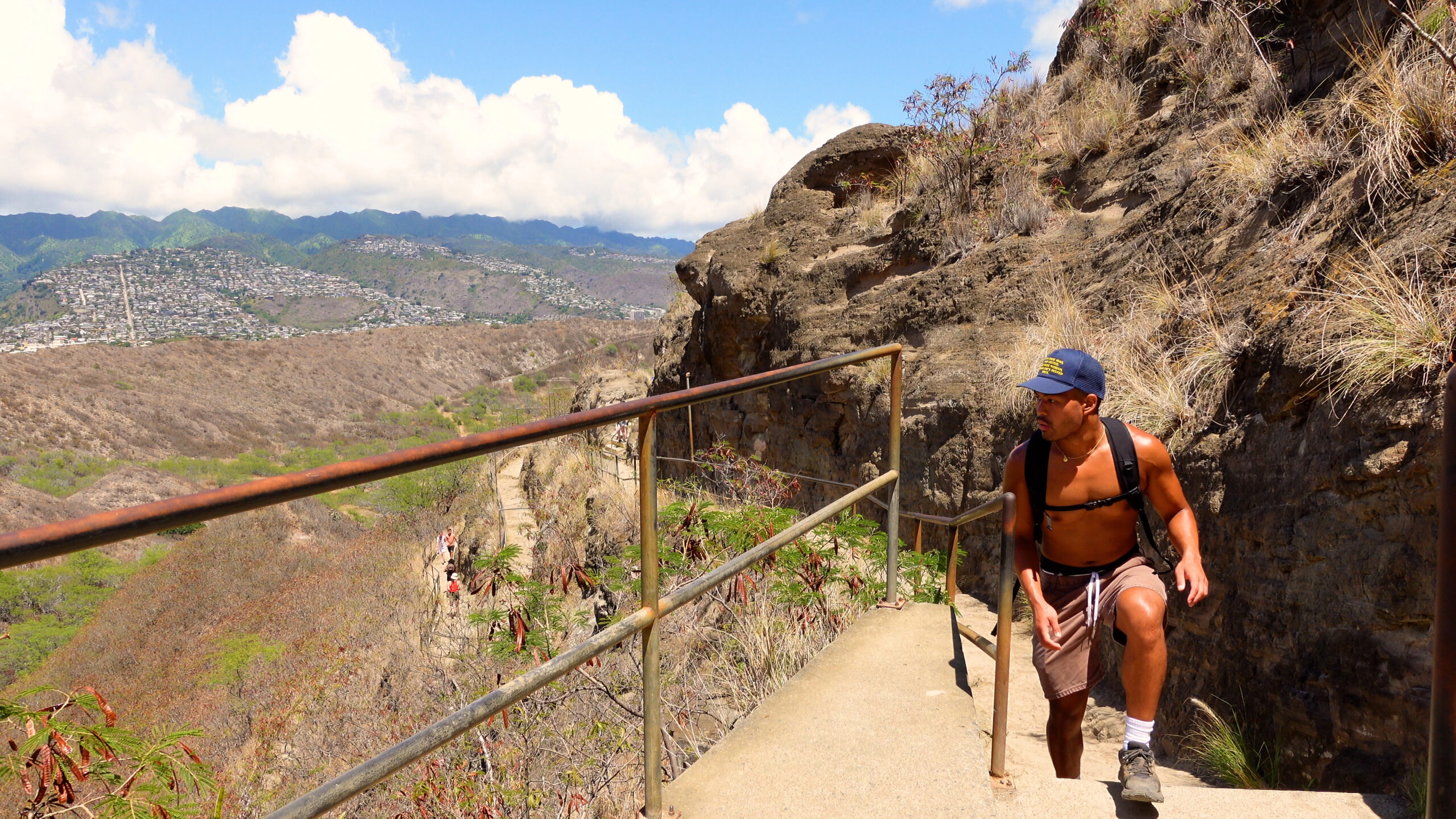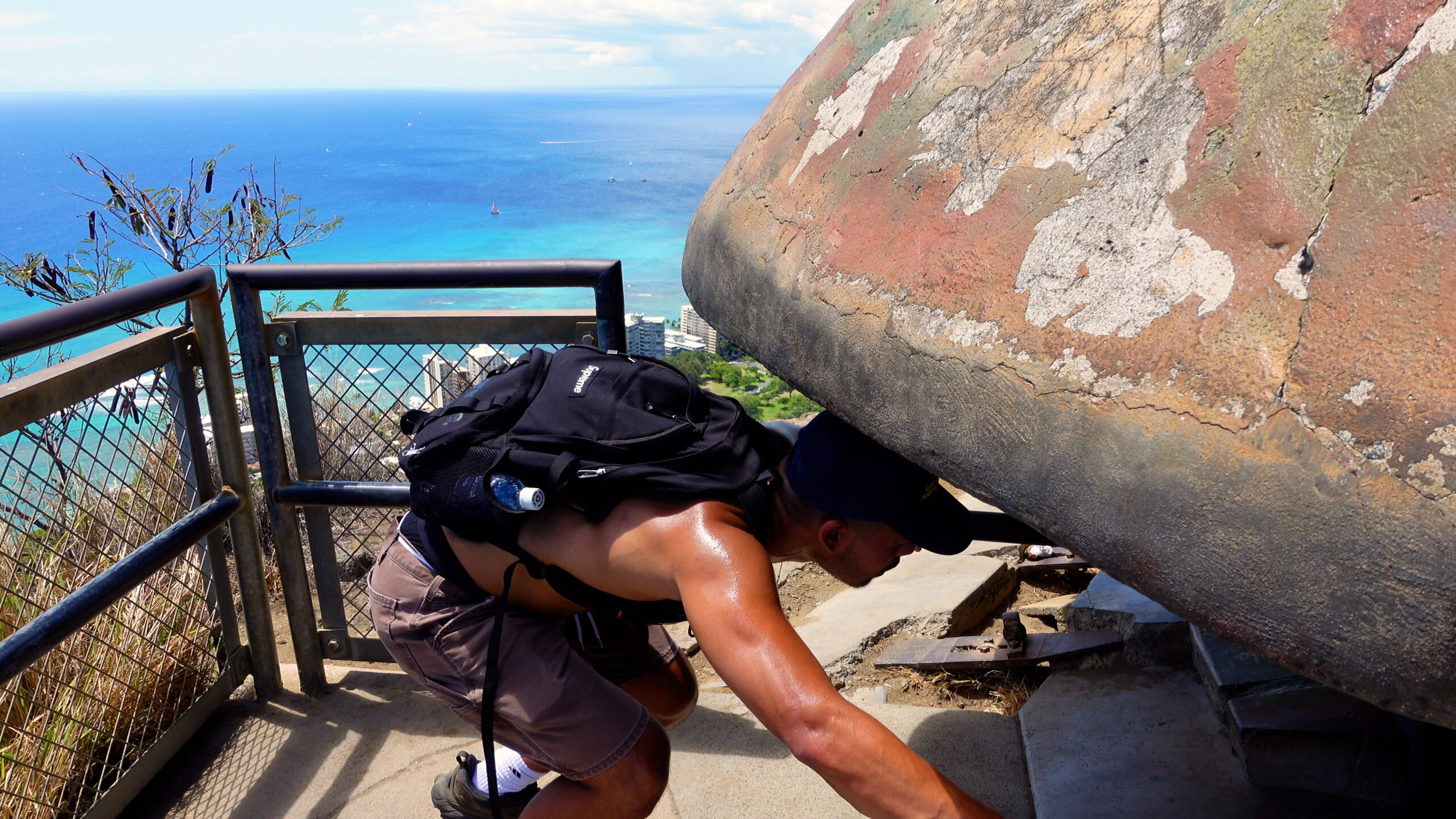Discover Diamond Head: A Blend of History and Nature on Waikiki’s Coastline
Diamond Head (Lē‘ahi) is an extraordinary landmark on Waikiki’s coastline, renowned for its historic hiking trail, awe-inspiring coastal views, and significant military importance. This ancient crater, dating back 300,000 years, was formed by a powerful eruption, resulting in a distinctive saucer-shaped crater that can be seen from the trail in the park. Use this trail guide to plan your adventure now and create memories that will last a lifetime.
The trail to the summit, constructed in 1908 as part of O’ahu’s coastal defense system, presents a challenging and steep 0.8-mile hike, ascending 560 feet in elevation. As you make your way, you’ll immerse yourself in the geological and military history of Diamond Head, navigating through switchbacks and stairs that lead to the Fire Control Station, which was completed in 1911. Upon reaching the summit, you’ll encounter bunkers and a grand navigational lighthouse, constructed in 1917, offering a picturesque view of the shoreline stretching from Koko Head to Wai’anae. If you visit during winter, there’s even a chance to catch a glimpse of majestic humpback whales. Embark on an unforgettable adventure at Diamond Head, where nature and history seamlessly blend together.


Trail Overview
What is the length of the trail and how long does it take to complete?
The out & back trail is just under 2 miles long and on average, it takes about an hour to complete.
What is the difficulty level?
The hike is rated as moderate by AllTrails and I agree.
What is the total elevation gain and elevation at the trailhead and summit?
The trail has a total elevation gain of around 500 feet. The trailhead sits at an elevation of approximately 250 feet, while the summit reaches around 750 feet.
Where can I get a map of the trail?
To prepare and navigate during the hike, you can utilize trail maps on AllTrails. Click here for a free 7 day trial!
What are the main obstacles on the trail?
The main obstacle is the last 1/10th of a mile due to the steep ascent up stairs.
Can this trail be hiked year-round?
The park is accessible daily and throughout the year except for Christmas and New Years Day.
Should kids hike the trail?
This hike is suitable for fit and experienced kids.
Are pets, bicycles, and strollers allowed on the trail?
Pets, bicycles, and strollers are prohibited on the trail. You can use strollers if you’re only using the facilities on the crater floor of Diamond Head, which is also ADA accessible.



Trip Planning
When is the best time to hike this trail to avoid heavy traffic and large crowds?
For a more enjoyable experience, consider visiting during mid-April to early June when temperatures are milder, or from September to mid-December when the weather begins to cool down. By choosing these optimal times, you can hike with fewer individuals, experience milder temperatures, and reduce the likelihood of encountering rain.
Is there an entrance fee and are reservations required?
There is an entrance fee and timed reservations are required, click here for more information.
Where do I park?
There is a paid parking option. However, if that isn’t an option, you can get dropped off or park elsewhere and still enter, which is what I did on Kilauea Ave. Be sure to pay attention to parking signs.
Are there water sources and restrooms available?
Restrooms, water fountains, vending machines, and a gift shop are located near the entrance.
How much water should I bring?
It is generally recommended to consume approximately half a liter of water per hour during moderate activity in moderate temperatures. You should aim to drink at least 1.5 liters of water.
Adding electrolytes and creatine to your water can enhance hydration and prevent muscle cramps. Check out the zero sugar hydration travel packets that I use! I mix them up in these 1 liter flexible and collapsible bottles!
What gear should I use?
Trekking poles or a walking stick can come in handy to distribute weight and relieve pressure on your legs as you hike. As always, pack a headlamp for emergencies.
Are there any trail closures?
Check recent AllTrails reviews for any trail updates.
What is the weather forecast for the trail?
Click here for current weather conditions from the NOAA.




Practice trail etiquette.
Hikers that are going toward the summit or ascending the trail have the right of way. So hikers that are descending or returning from their hike should yield to hikers ascending. Make sure to leave no trace and whatever you pack in, pack out. Lastly, always pay attention to the signs posted and to stay on trail to avoid disturbing wildlife and causing erosion.
